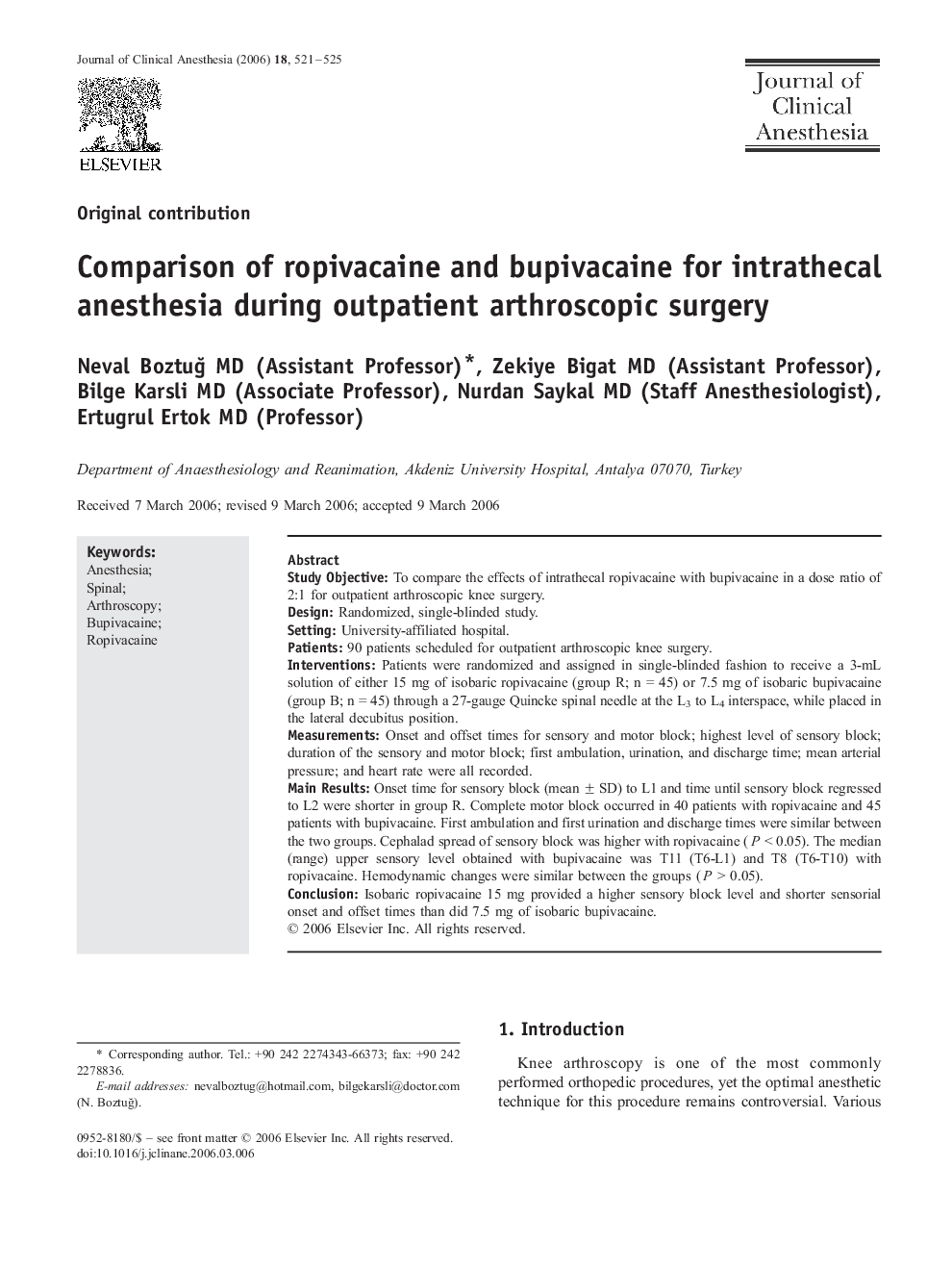| Article ID | Journal | Published Year | Pages | File Type |
|---|---|---|---|---|
| 2763739 | Journal of Clinical Anesthesia | 2006 | 5 Pages |
Study ObjectiveTo compare the effects of intrathecal ropivacaine with bupivacaine in a dose ratio of 2:1 for outpatient arthroscopic knee surgery.DesignRandomized, single-blinded study.SettingUniversity-affiliated hospital.Patients90 patients scheduled for outpatient arthroscopic knee surgery.InterventionsPatients were randomized and assigned in single-blinded fashion to receive a 3-mL solution of either 15 mg of isobaric ropivacaine (group R; n = 45) or 7.5 mg of isobaric bupivacaine (group B; n = 45) through a 27-gauge Quincke spinal needle at the L3 to L4 interspace, while placed in the lateral decubitus position.MeasurementsOnset and offset times for sensory and motor block; highest level of sensory block; duration of the sensory and motor block; first ambulation, urination, and discharge time; mean arterial pressure; and heart rate were all recorded.Main ResultsOnset time for sensory block (mean ± SD) to L1 and time until sensory block regressed to L2 were shorter in group R. Complete motor block occurred in 40 patients with ropivacaine and 45 patients with bupivacaine. First ambulation and first urination and discharge times were similar between the two groups. Cephalad spread of sensory block was higher with ropivacaine (P < 0.05). The median (range) upper sensory level obtained with bupivacaine was T11 (T6-L1) and T8 (T6-T10) with ropivacaine. Hemodynamic changes were similar between the groups (P > 0.05).ConclusionIsobaric ropivacaine 15 mg provided a higher sensory block level and shorter sensorial onset and offset times than did 7.5 mg of isobaric bupivacaine.
